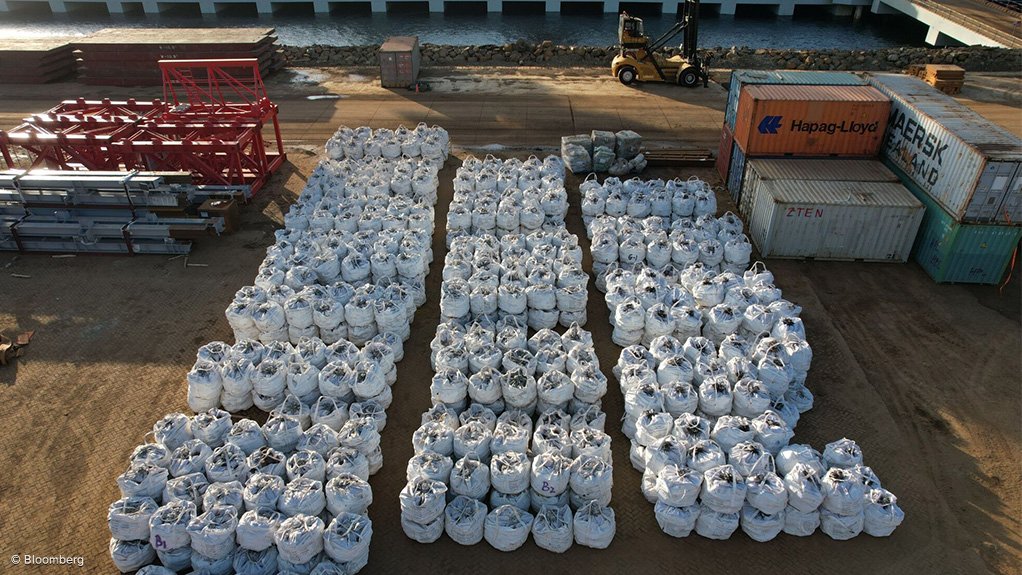From green hype to bailouts, the nickel industry has imploded
Just 18 months ago, the world’s biggest mining company was in a nickel frenzy. BHP Group, to much fanfare, had struck a deal with Tesla to supply it with the crucial ingredient for electric vehicles. It was about to go toe-to-toe with Australian billionaire Andrew Forrest for control of one of the globe’s most prospective mines.
For BHP, nickel offered a bright spot. Its management had earmarked the material as a key pillar of growth, a future-facing commodity that would help offset its exit from fossil fuels and let it tap into new demand driven by the world’s race to decarbonize.
Yet things have quickly soured for BHP and other miners. The nickel market has been thrown into chaos after a flood of new supply from Indonesia — the result of huge Chinese investment and major technological breakthroughs. Mines across the world are at risk of closing, others are asking for state bailouts or going bust. BHP, for one, is now weighing up the future of its flagship Nickel West mine in Australia.
Until recently, many of the industry’s biggest names couldn’t have been more bullish about the prospects for nickel. The once-boring metal, traditionally used to make steel stainless, is a crucial ingredient for electric vehicle batteries. A supply shortage stretching for years to come was forecast and mining companies jumped at a great opportunity to burnish their green credentials.
Traditionally, nickel has been split into two categories: low grade for making stainless steel and high grade for batteries. A huge Indonesian expansion of low-grade production led to a surplus, but processing innovations have allowed that glut to be refined into a high-quality product that’s hitting the battery market.
As a result, prices for the metal have crashed over 40% from a year ago, adding to hurdles in a market that is also wobbling from weak demand and persistent concerns about China’s economy. Macquarie analysts estimate that more than 60% of the global industry is losing money at current prices.
The scale of the collapse has left some in the industry questioning if there’s a future for most nickel mines outside of Indonesia. It’s also adding to concerns among US and European policymakers about China’s control over key commodities, with its companies leading much of the Indonesia’s production.
“After watching the tide go out on the nickel world for over a year – with the halving of its metal price – we’ve got some high-cost assets exposed now,” said Tom Price, head of commodities strategy at Liberum Capital. He added that mines in Western Australia and the French territory of New Caledonia are likely to be the most vulnerable.
In New Caledonia — the South Pacific island chain that was once seen as the future of nickel production — the French government has been forced to step in to keep mines and plants operating that are essential to the territory’s economy. Officials have been meeting with key shareholders of three processing plants to hammer out a rescue deal, with no breakthrough so far.
The situation has been equally bleak in Australia.
In addition to BHP’s review of nickel assets there, Panoramic Resources is suspending a key mine after entering voluntary administration late last year, when it failed to find a buyer or partner. An IGO site will be shuttered, as will some operated by tycoon Andrew Forrest’s Wyloo Metals and First Quantum Minerals.
Producers in Western Australia are also turning to officials for help. At a crisis meeting at the end of last month, miners asked the federal government to provide tax credits for downstream processing.
But even with production pullbacks starting to bite, they’re unlikely to provide imminent support to nickel prices, according to Allan Ray Restauro, an analyst at BloombergNEF. He said, “The flood of supply from Indonesia is projected to continue to exert downward pressure on prices in 2024.”
That’s because Indonesian production — which already accounts for half of global supply — may prove more resistant to output cuts. The Southeast Asian nation has emerged as a global nickel hub after billions of dollars of investment in efficient plants that benefit from inexpensive labor, cheap power and readily available raw materials.
Still, the country’s rapid expansion has drawn criticism. Much of its production comes from coal-powered energy, giving it higher emissions per ton than rival producers, and its rapid expansion is eroding rainforests.
Producers such as BHP have instead trumpeted that buyers paying a premium for so-called green nickel would help lift prices. So far, however, there has been little evidence of that.
The company conceded late last year that automakers remain happy to buy Indonesian nickel, suggesting there will be little relief for miners elsewhere any time soon.
‘What can stop these mine and project closures? A sustained lift in nickel prices, obviously,” said Liberum’s Price. “Typically, only a nickel demand recovery can achieve that.”
Comments
Press Office
Announcements
What's On
Subscribe to improve your user experience...
Option 1 (equivalent of R125 a month):
Receive a weekly copy of Creamer Media's Engineering News & Mining Weekly magazine
(print copy for those in South Africa and e-magazine for those outside of South Africa)
Receive daily email newsletters
Access to full search results
Access archive of magazine back copies
Access to Projects in Progress
Access to ONE Research Report of your choice in PDF format
Option 2 (equivalent of R375 a month):
All benefits from Option 1
PLUS
Access to Creamer Media's Research Channel Africa for ALL Research Reports, in PDF format, on various industrial and mining sectors
including Electricity; Water; Energy Transition; Hydrogen; Roads, Rail and Ports; Coal; Gold; Platinum; Battery Metals; etc.
Already a subscriber?
Forgotten your password?
Receive weekly copy of Creamer Media's Engineering News & Mining Weekly magazine (print copy for those in South Africa and e-magazine for those outside of South Africa)
➕
Recieve daily email newsletters
➕
Access to full search results
➕
Access archive of magazine back copies
➕
Access to Projects in Progress
➕
Access to ONE Research Report of your choice in PDF format
RESEARCH CHANNEL AFRICA
R4500 (equivalent of R375 a month)
SUBSCRIBEAll benefits from Option 1
➕
Access to Creamer Media's Research Channel Africa for ALL Research Reports on various industrial and mining sectors, in PDF format, including on:
Electricity
➕
Water
➕
Energy Transition
➕
Hydrogen
➕
Roads, Rail and Ports
➕
Coal
➕
Gold
➕
Platinum
➕
Battery Metals
➕
etc.
Receive all benefits from Option 1 or Option 2 delivered to numerous people at your company
➕
Multiple User names and Passwords for simultaneous log-ins
➕
Intranet integration access to all in your organisation




















